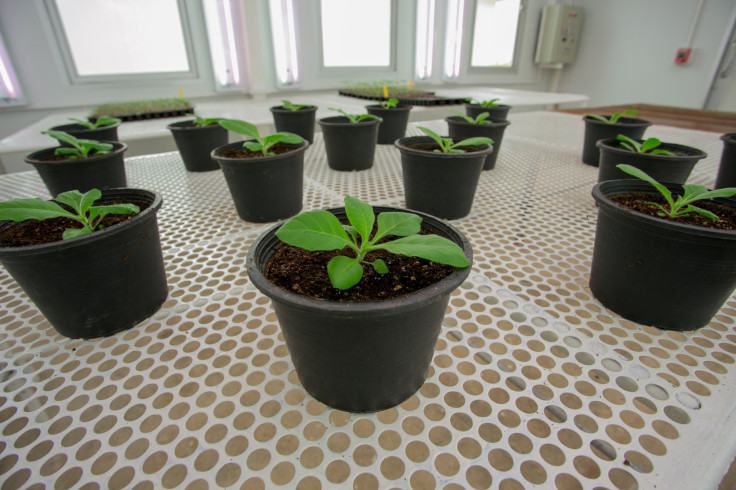Tobacco That Saves Lives: Scientists Find Ways To Create Vaccines, Cancer Drug From Its Plant Leaves

Harvesting plants for the use of vaccines has been around for a while — by “growing” vaccines on leaves in bulk, researchers believe it could one day solve major drug shortage problems. Referred to as molecular farming, the process involves infecting plants with virus vectors, which turn into proteins that are then used to make vaccines.
Scientists and companies like Medicago have turned to plants in vaccine production because they are a pretty cost-effective way to make a lot of drugs. “Plants are uniquely capable of efficient protein expression of different complexity levels and glycosylation patterns at high yields and low costs,” Medicago writes on its website. In addition, “[g]reenhouse-based manufacturing facilities conditions can be quickly built for rapid and economic scale-up in order to meet market demands.”
And the plant that has proven itself to be a successful host in vaccine harvesting is one that’s very similar to the commercial tobacco plant used in cigarettes. It’s called Nicotiana benthamiana, and yes, it contains nicotine. “We use tobacco plants because they multiply and maintain our virus vectors very well,” said Dr. Vidadi Yusibov, professor at Fraunhofer USA Center for Molecular Biology and the author of a recent study. “In addition, they grow fast yielding, large quantities of biomass in a short period of time.”
In fact, Nicotiana benthamiana is a widely used experimental host in plant virology, partially because of its ability to be infected by a large variety of plant viruses. The plant is an Australian indigenous species that is very similar to the smoking tobacco plant but not quite the same; it contains nicotine and alkaloids, but at lower levels than commercial tobacco. It’s this particular plant that has been making the rounds among researchers who are looking to find vaccines and cancer drugs through plant genetic modification and protein expression.
“So we were looking for a better way,” Herta Steinkellner, a molecular biologist and engineer at University of Natural Resources and Life Sciences in Vienna, told Txchnologist. “It turns out that plants can do it — humans and plants have a lot of similarities at the molecular level. The human body can’t distinguish these plant-based antibodies.” In her work, Steinkellner studied Nicotiana benthamiana. “This opens a new door in generating a very efficient, new class of drugs that hasn’t been available before,” she told Txchnologist. “With this method, we can systematically and specifically engineer the antibody to target any number of foreign bodies in a human — drug-resistant bacteria, cancer, and others.”
The “tobacco factory” produces its plants by growing them in trays in a base of mineral wool, and provides them with light, water, and nutrients. Robots take the plants from station to station to enact all the necessary steps of the production process. First they plant seeds, then they introduce the virus vector by means of vacuum infiltration — which involves turning a try of plants upside down and placing them face-down into water holding genetic information. After being placed back in the growth module, the plants begin growing the target proteins on their leaves; they are then harvested.
Ever since the (H1N1) swine flu pandemic during winter 2009-2010, caused largely by a shortage of the swine flu vaccine, the U.S. government has been searching for ways to develop faster ways to produce vaccines. Though molecular farming has proven to be effective, it will take quite a while for the tobacco technique to be approved by the Food & Drug Administration (FDA). So while tobacco has been causing millions of deaths, it may someday prove to be a public health solution, and save lives instead.



























